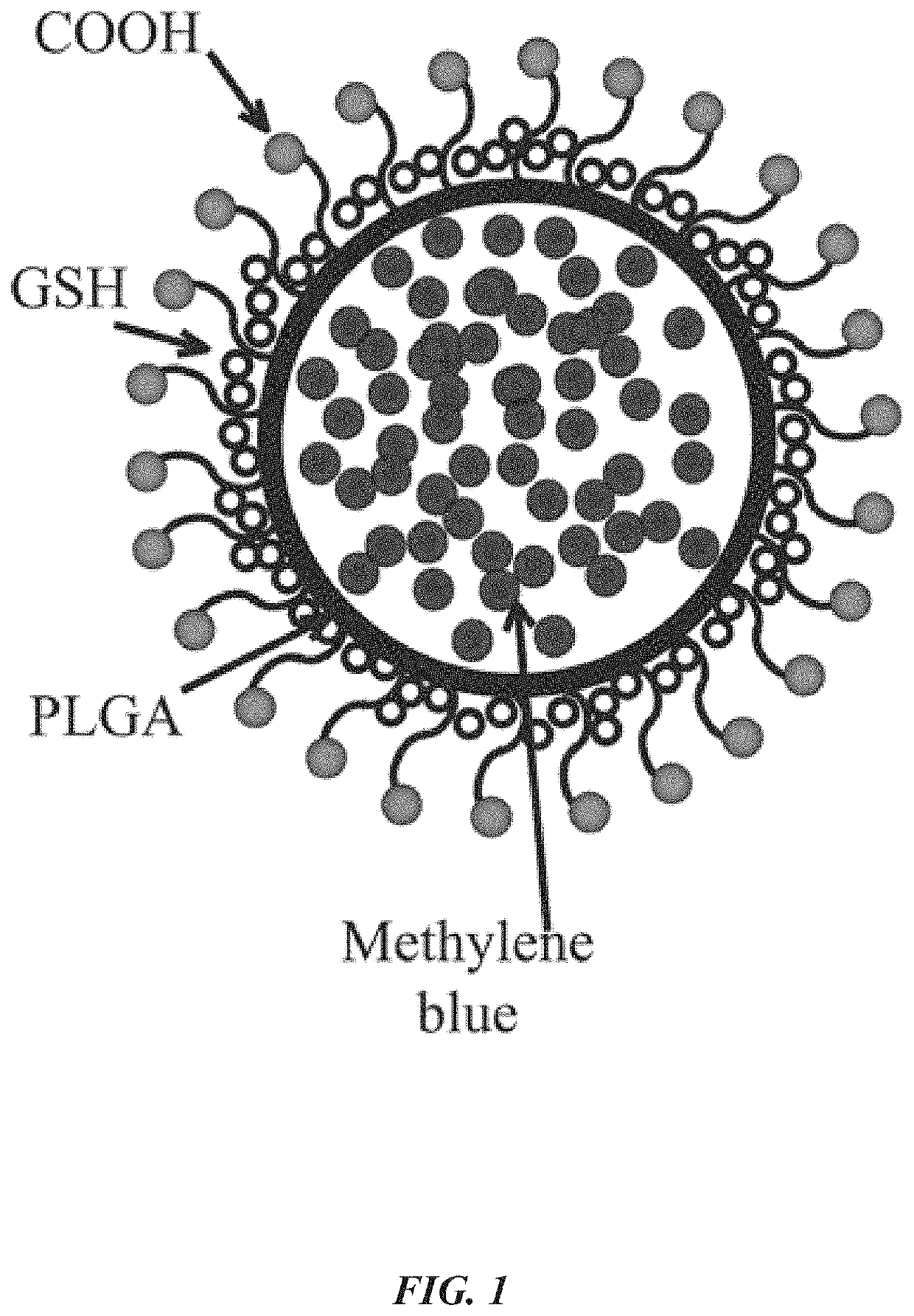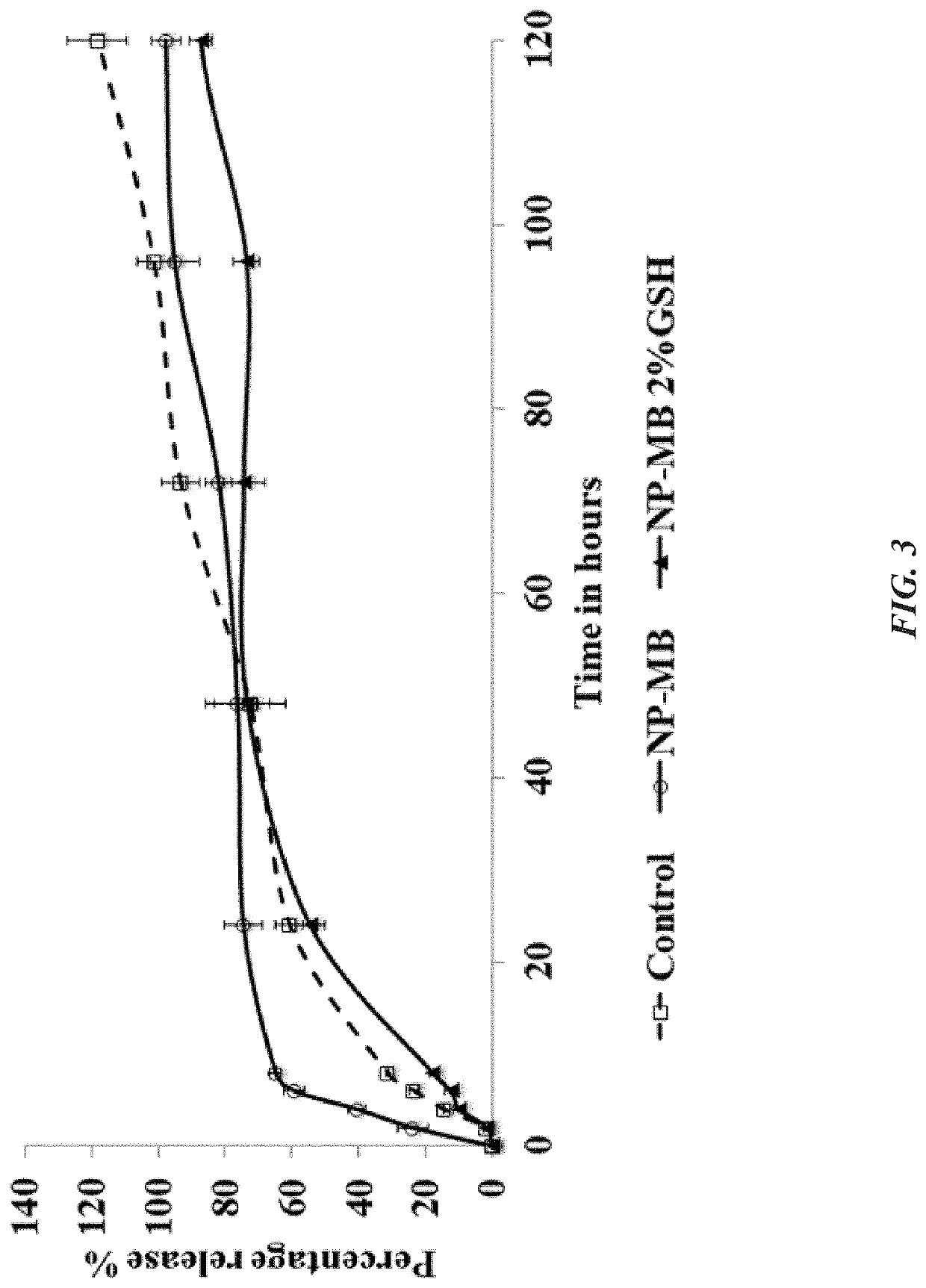Preparation and characterization of methylene blue nanoparticles for Alzheimer's disease and other tauopathies
- Summary
- Abstract
- Description
- Claims
- Application Information
AI Technical Summary
Benefits of technology
Problems solved by technology
Method used
Image
Examples
Embodiment Construction
[0045]In the following detailed description of the preferred embodiments, reference is made to the accompanying drawings, which form a part thereof, and within which are shown by way of illustration specific embodiments by which the invention may be practiced. It is to be understood that other embodiments may be utilized and structural changes may be made without departing from the scope of the invention.
[0046]Methylene blue (MB) has been shown to slow down the progression of the Alzheimer's disease (AD) and other tauopathies; however distribution of MB into the brain is limited due its high hydrophilicity. As a result of the challenges in MB delivery to the brain, an object of the current invention is to improve BBB penetration and MB cellular uptake in the brain and to decrease the systemic MB side effects. In an embodiment, a hydrophobic glutathione coated PLGA nanoparticles was developed to improve bioavailability of MB in the brain. Glutathione coated poly-(lactide-co-glycolide...
PUM
| Property | Measurement | Unit |
|---|---|---|
| Fraction | aaaaa | aaaaa |
| Time | aaaaa | aaaaa |
| Diameter | aaaaa | aaaaa |
Abstract
Description
Claims
Application Information
 Login to View More
Login to View More - R&D
- Intellectual Property
- Life Sciences
- Materials
- Tech Scout
- Unparalleled Data Quality
- Higher Quality Content
- 60% Fewer Hallucinations
Browse by: Latest US Patents, China's latest patents, Technical Efficacy Thesaurus, Application Domain, Technology Topic, Popular Technical Reports.
© 2025 PatSnap. All rights reserved.Legal|Privacy policy|Modern Slavery Act Transparency Statement|Sitemap|About US| Contact US: help@patsnap.com



